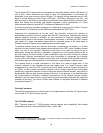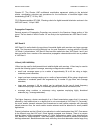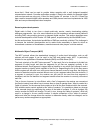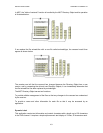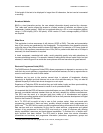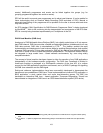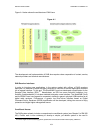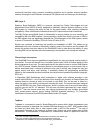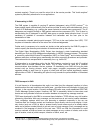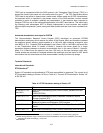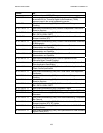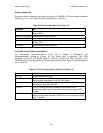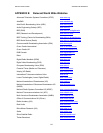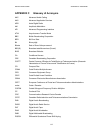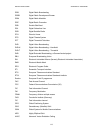
DIGITAL RADIO GUIDE APPENDIX A: EUREKA 147
106
contents regularly. There is no need for return link to the service provider. This "audio anytime"
system is particularly attractive for in-car applications.
IP datacasting in DAB
The DAB system is capable of carrying IP packets (datagrams) using IP/UDP protocol.
27
As
these packets travel unidirectionally from a service provider to many users simultaneously, this is
a form of IP Multicasting, e.g., pushing the same contents to several users concurrently. The IP
datagrams are tunnelled through a DAB packet mode service component (SC). This is done by
encapsulating the IP datagram in an MSC data group on packet mode transport level. It is not
necessary to establish a connection between the transmitter and the user prior to the
transmission of data.
For connection oriented point-to-point transport, TCP has to be used (rather than UDP). TCP
requires an interaction channel for the return flow of acknowledgements.
Further work is necessary to be carried out similar to that performed by the DVB-IPI project in
order to specify the discovery and selection of the data services by the user.
The Digital Video Broadcasting (DVB) Project has developed a data broadcasting standard
describing an IPv4 and IPv6 datagrams encapsulation in MPEG-2 transport stream. This system
is commonly called Multi-Protocol Encapsulation (MPE) or Data Piping
28
and includes dynamic
address resolution, multicast group membership and other supporting procedures and protocols.
The overhead due to encapsulation is reasonably low, e.g., below 3%.
IP datacasting is an interesting option for the DAB systems required to work with IP-enabled
devices such as mobile phones and PDAs. The IP layer could be used as a common
communications layer between the two systems. IP datacasting over DAB will bring the data
content such as moving pictures, audio, web pages, computer programmes and software
upgrades reliably to each user (or a group of users) and will thus expand significantly market
opportunities of DAB. IP datacasting will pave the way towards the personalisation of broadcast
services.
TPEG transport in DAB
It is well known to all broadcasters that radio is an ideal (and the cheapest) medium to inform
travellers about the road conditions and traffic jams – provided that such information is timely and
relevant, in the correct location. Currently analogue FM radio uses a well-established RDS-TMC
(Traffic Message System) system. However, the TMC is essentially limited to inter-urban road
events and every decoder must have a location database to interpret any message received.
TPEG was developed by the EBU to overcome these limitations. TPEG delivers very rich location
referencing information with every message, so that receivers do not need a location database.
Thus, navigation systems which are now becoming a standard commodity in the car can
"machine read" the location content and localise an event directly onto the map display. A text-
only device (such as a PDA) is able to present locally found names such as a railway station
name and a platform number directly to an end user as a text message. Such a message can be
rendered in the language of choice of the end user. TPEG can filter the information to avoid
receiver overload, so that end users can select massages on any number of criteria, such as the
type of location, mode of public transport, direction of travel, event, etc.
27
ES 201 735 V1.1.1 Digital Audio Broadcasting (DAB); Internet Protocol (IP) Datagram Tunnelling
28
EN 301 192 V1.3.1 (2003-05) Digital Video Broadcasting (DVB); DVB specification for data broadcasting



